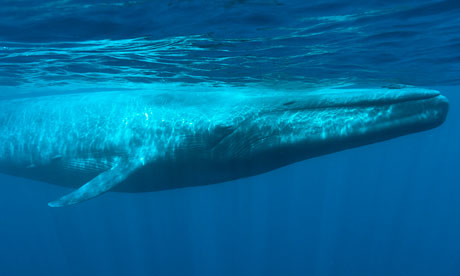Spade-toothed beaked whales were first discovered in 1872 when bone fragments
were found on a remote Pacific island, but until now the species has
remained entirely hidden from human view.
In the 140 years since they were first discovered, the only sign that the
creatures' continued existence lay in two partial skulls found in New
Zealand in the 1950s and Chile in 1986.
Now scientists have reported a complete description of the whales, which are
thought to spend most of their lives in the deep waters of the Pacific
Ocean, only rarely coming to the surface.
The Mother and her male calf were stranded on Opape Beach at the northern tip
of New Zealand in December 2010 but were initially thought to be of a much
more common species known as Gray's beaked whales.
It was only after routine DNA analysis that experts realised their true
identity.
Dr Rochelle Constantine of the University of Auckland said: "This is the
first time this species — a whale over five meters in length — has ever been
seen as a complete specimen, and we were lucky enough to find two of them.
"Up until now, all we have known about the spade-toothed beaked whale was from three partial skulls collected from New Zealand and Chile over a 140-year period. It is remarkable that we know almost nothing about such a large mammal."
Because the animals had never been seen very little is known about their behaviour, but writing in the Current Biology journal, the researchers suggested they were likely to be "exceptionally deep divers, foraging for squid and small fish and spending little time at the surface."
Dr Constantine said it was unclear why the species has been so elusive, but added: "It may be that they are simply an offshore species that lives and dies in the deep ocean waters and only rarely wash ashore. New Zealand is surrounded by massive oceans. There is a lot of marine life that remains unknown to us."
"Up until now, all we have known about the spade-toothed beaked whale was from three partial skulls collected from New Zealand and Chile over a 140-year period. It is remarkable that we know almost nothing about such a large mammal."
Because the animals had never been seen very little is known about their behaviour, but writing in the Current Biology journal, the researchers suggested they were likely to be "exceptionally deep divers, foraging for squid and small fish and spending little time at the surface."
Dr Constantine said it was unclear why the species has been so elusive, but added: "It may be that they are simply an offshore species that lives and dies in the deep ocean waters and only rarely wash ashore. New Zealand is surrounded by massive oceans. There is a lot of marine life that remains unknown to us."



